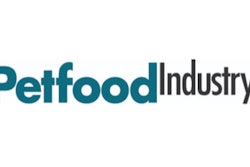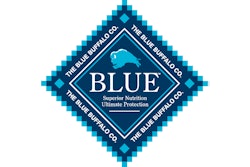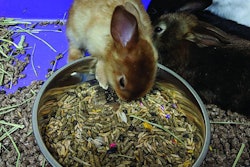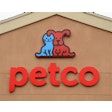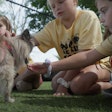
General Mills plans to increase co-packer production of dry food and treats after capacity fell short earlier this year. Nevertheless, Blue Buffalo and other General Mills pet food brands continued an upward sales trend in the first quarter of fiscal year 2023. In that period, General Mills’ pet segment sales grew 19% to reach US$579.9 million, up from US$488.0 in the same quarter last fiscal year. Company representatives stated that this growth was primarily driven by favorable net price realization and mix, in General Mills’ FY23Q1 earnings statement. The company’s pet food and treats segment saw operating profit growth to US$123.1 million, up 7% from US$115.2 million. This was primarily driven by favorable net price realization and mix, and cost savings, partially offset by input cost inflation and higher SG&A expenses.
I want my free, daily news update from Petfood Industry.
“While demand for Blue Buffalo remains strong, we continue to be challenged by capacity constraints on the business, which is limiting our ability to deliver competitive customer service and drive further volume growth,” Kofi Bruce, chief financial officer for General Mills, said in prepared statements. “We gained share in wet pet food in the first quarter, but capacity limitations did not allow us to keep pace with the category in dry food and treats. We anticipate bringing on additional co-packer capacity on the treats business in the back half of fiscal 2023. For dry food, we continue to work to increase the output of our current lines, and we plan to add significant additional capacity to our internal network starting in fiscal 2024.”
General Mills profits from Tyson pet treats buy in FY22
Published July 12
Blue Buffalo’s parent company, General Mills, reached US$610 million in fourth-quarter net sales for its pet segment in fiscal year 2022, an increase of 37%. This growth was driven by favorable net price realization and mix, along with pound-volume growth, according to a press release from General Mills.
During the first quarter of fiscal year 2022, General Mills acquired Tyson Foods’ pet treats business for US$1.2 billion in cash. The deal included the Nudges, Top Chews and True Chews brands. Net sales in Q4 FY22 included a benefit from the Tyson Foods’ pet treats acquisition. Organic net sales were up 22%. Pet food and treat segment operating profit increased 10% to US$113 million, driven primarily by favorable net price realization and mix and higher volume, including benefits from the pet treats acquisition, partially offset by higher input costs and higher selling, general and administrative expenses.
For the full year, General Mills pet segment net sales increased 30% to US$2.3 billion. Net price realization and mix added to net sales growth, including a favorable mix from the pet treats acquisition and the impact of SRM actions put in place in response to input cost inflation. Organic net sales were up 18%. Segment operating profit increased 13% to US$471 million, driven primarily by favorable net price realization and mix and higher volume, including benefits from the pet treats acquisition, partially offset by higher input costs and higher SG&A expenses.
General Mills pet food and treat segment net sales FY22
- FY2022 - US$2,259.4 million, up 30% from FY2021 (US$1,732.4 million), a 2% change over FY2020 (US$1,694.6 million)
General Mills pet food and treat segment operating profit FY22
- FY2022 - US$470.6 million, up 13% from FY2021 (US$415 million), up 6% from FY20 (US$390)


